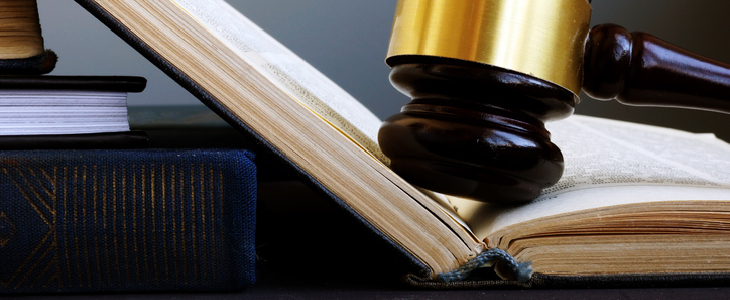Patent litigation can be a critical turning point for innovators and businesses in today’s fast-paced technological world. It involves the legal process of resolving disputes over the infringement, validity, or enforcement of patents. For those holding patents or facing allegations of infringement, navigating this area of law is important for protecting intellectual property and commercial interests. Whether defending a patent or contesting one, understanding patent litigation is essential in safeguarding your innovations and maintaining a competitive edge.
What Is Patent Litigation?
Patent litigation is a legal process that arises when there’s a dispute over the infringement, validity, or enforcement of patent rights. Essentially, it’s the method through which patent owners can take legal action to protect their inventions from unauthorized use. When a patent holder believes another party is using their patented invention without permission, they may file a lawsuit alleging patent infringement. Conversely, those accused of infringement might challenge the validity of the patent itself. This legal battleground is not just about the technicalities of patent law; it’s also where the innovative efforts and investments of individuals and companies are defended or contested, making it a central aspect of the intellectual property system.
Why Patent Litigation Matters to You
Patent litigation is vital for anyone involved in creating or utilizing patented technology. If you’re an inventor, it protects your exclusive rights, ensuring your innovation remains your intellectual property. This legal shield is crucial for maintaining a competitive advantage and securing returns on your investment. For businesses, understanding patent litigation helps in navigating the complexities of product development and market entry, avoiding costly infringements. On the other hand, if you’re accused of infringement, effectively handling patent litigation is key to safeguarding your operations and future innovation.
The Patent Litigation Process: A Step-by-Step Overview
- Filing a Complaint: The process begins when a patent holder files a complaint in a federal court, alleging infringement. This document outlines the specifics of the claim, including the patent involved and the nature of the alleged infringement.
- Response and Counterclaims: The accused party then responds to the complaint, possibly challenging the patent’s validity or denying infringement. They may also file counterclaims, potentially alleging the patent holder’s other legal wrongdoings.
- Discovery Phase: Both parties engage in discovery, exchanging documents and evidence relevant to the case. This phase often involves depositions, interrogatories, and requests for admissions, aiming to gather detailed information from each side.
- Pre-Trial Motions: Before trial, parties may file various motions, like motions to dismiss or for summary judgment, seeking to resolve the case or limit issues for trial based on legal arguments.
- Trial: If the case goes to trial, each side presents its evidence and arguments in front of a judge or jury. The trial includes witness testimonies, expert opinions, and demonstrations of how the patent applies (or does not apply) to the accused product or process.
- Post-Trial Motions and Appeals: After a verdict, the losing party can file post-trial motions challenging the decision. They can also appeal to a higher court, questioning legal or procedural errors during the trial.
- Remedies and Enforcement: If the patent holder wins, the court may order remedies like monetary damages or injunctions against the infringer. The winning party then works to enforce these court orders to remedy the infringement.
Key Strategies in Patent Litigation
In patent litigation, successful strategies hinge on careful preparation and a thorough understanding of patent law. A key strategy is the thorough analysis of the patent at issue, including a solid grasp of its scope and validity. This involves dissecting the patent’s claims and understanding the relevant technology in depth. Another vital strategy is the gathering and presentation of evidence, especially in proving or disproving infringement. Crafting a compelling narrative around this evidence is important, as it must resonate with judges or jurors who may not have technical expertise. Additionally, considering alternative dispute resolution methods, like mediation or arbitration, can offer more control and potentially quicker resolutions.
Common Challenges in Patent Litigation and How to Overcome Them
Patent litigation presents unique challenges, such as proving infringement or establishing a patent’s validity. Proving infringement often requires a detailed technical analysis to demonstrate that the defendant’s product or process falls within the scope of the patent claims. To overcome this, parties rely on expert witnesses who can translate complex technical details into understandable terms for the court. Establishing validity, on the other hand, involves navigating prior art and patentability criteria, which requires research and strategic arguments. Another challenge is managing the high costs and time involved in litigation. Efficient case management, including leveraging technology for document review and considering settlement options, can mitigate these issues. Adapting to these challenges is key to navigating the complexities of patent litigation effectively.
Contact an Experienced Patent Litigation Attorney
Gearhart Law offers dedicated support in patent litigation, helping clients effectively navigate the often-complex world of intellectual property disputes. Their experienced team is well-versed in the nuances of patent law, providing strong defense and strategic advice for your innovations. If you’re encountering patent litigation challenges or need informed legal guidance, consider contacting Gearhart Law. Their commitment is to safeguard your intellectual property rights and support your business goals.

